Articles

Access and download PowerPoint slides (in PDF) prepared by Jane Waterhouse, C2O Consulting, for presentation to government agencies involved in water quality management in the GBR.

This article provides a brief review of the Coral Sea, and lists the main body of literature written about this important geographic region. The Coral Sea hosts a high diversity of geomorphic and oceanographic features, giving rise to numerous habitats and ecosystems, from abyssal seafloor over 4,000 m deep to vegetated coral cays above the ocean’s surface. This area hosts important habitats and migration corridors that sustain unique assemblages of organisms. Many of the Coral Sea’s ecosystems and ecological processes remain to be explored and described through scientific research.
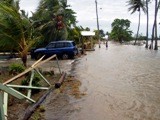
This report provides a synthesis of research on climate change and coastal science in the Torres Strait, and has been produced for the Australian Government’s Marine and Tropical Sciences Research Facility (MTSRF). It identifies and summarises work to date on reef evolution, hydrodynamics and sedimentary environments throughout the Torres Strait. It describes the island dynamics at Boigu, Saibai, Masig, Poruma, Warraber and Iama Islands. Numerous studies relating to climatic change are reviewed and the most relevant regional predictions for climate change in the Torres Strait are presented. The potential physical and ecological impacts of these changes in the Torres Strait are also identified. Adaptation and mitigation measures are suggested and their outcomes and consequences are evaluated. The key principles from sustainable land use plans on the islands are summarised and knowledge gaps in the fields of both coastal and climatic science are identified to guide future research.
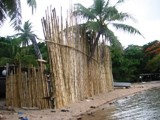
As part of its commitment under Theme 5 of the MTSRF, the Reef and Rainforest Research Centre publishes, or makes available, outputs (e.g. final technical or scientific reports, synthesis reports) from MTSRF-funded research projects nested within Research Themes 1-4.
Researchers funded through the Australian Government’s Marine and Tropical Sciences Research Facility (MTSRF) have worked closely with Torres Strait communities to improve our understanding of both the vulnerability of Torres Strait islands to climate change, and their adaptation capacity.
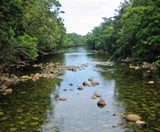
As part of its commitment under Theme 5 of the MTSRF, the Reef and Rainforest Research Centre publishes, or makes available, outputs (e.g. final technical or scientific reports, synthesis reports) from MTSRF-funded research projects nested within Research Themes 1-4.
In response to the needs of managers of the Great Barrier Reef, a key focus area of the Australian Government's Marine and Tropical Sciences Research Facility (MTSRF) has been the development of thresholds of pollutants of concern in freshwater, estuarine and marine ecosystems. The outcomes of this research are summarised in this report, starting with an overview of new knowledge of the impacts of degraded water quality, and outlining how this work has been translated into threshold values and, ultimately in some cases, management guidelines for the GBR.

As part of its commitment under Theme 5 of the MTSRF, the Reef and Rainforest Research Centre publishes, or makes available, outputs (e.g. final technical or scientific reports, synthesis reports) from MTSRF-funded research projects nested within Research Themes 1-4.
The Great Barrier Reef (GBR) is a diverse ecosystem, which is bounded on its western side by a large number of large and small catchments. Protecting GBR ecosystems and the quality of the water they rely upon has become a major priority for resource managers and the community as a whole. Water quality and ecosystem health monitoring is needed to assess current status, identify existing and emerging problems, evaluate the consequences of various anthropogenic land and water use practices, devise improved practices and assess the effectiveness of management measures.
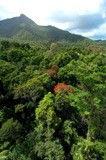
As part of its commitment under Theme 5 of the MTSRF, the Reef and Rainforest Research Centre publishes, or makes available, outputs (e.g. final technical or scientific reports, synthesis reports) from MTSRF-funded research projects nested within Research Themes 1-4.
In the Wet Tropics of Queensland, tropical rainforest covered an estimated 965,000 ha prior to European settlement of the area during the 19th and 20th centuries. Subsequent human impacts resulted in a reduction in the area of rainforest to approximately 750,000 ha.
Here, Tng and others explore the rates of landscape change and landscape conditions associated with rainforest expansion in the Wet Tropics World Heritage region of northeastern Queensland. They assess change in rainforest in a 270 square kilometre study area within the Wet Tropics Bioregion, and ask to what extent rates of rainforest change were similar for particular time periods and mediated by climatic and landscape conditions.
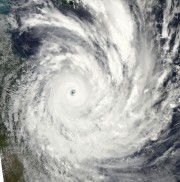
Severe Tropical Cyclone Yasi crossed the Queensland coast near Mission Beach on the night of the 2nd February 2011. This page shows satellite images (from NASA's MODIS satellites) of the disturbance to the Great Barrier Reef, damage to the vegetation in Mission beach and Cardwell area and flood plumes along the North Queensland coast.

This page shows the extent of the flood plumes of the Fitzroy, Burnett, Mary and Brisbane Rivers caused by the extensive flooding that occurred in Queensland in December 2010 and January 2011. These flood plume maps were produced as part of the Reef Rescue Marine Monitoring Program - Assessment of terrestrial run-off entering the Great Barrier Reef project by James Cook University (contact Michelle Devlin). They were based on visual inspection of NASA MODIS satellite images and were created for days where the cloud cover was low enough to see the boundary of the plumes.
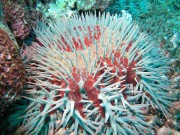
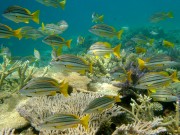
Corals provide essential habitat structure and energy in coral reef systems, facilitating the existence of numerous reef associated species. Indo-Pacific coral reefs are home to over 600 species of hard corals (also called stony corals or scleractinian corals), and 4000-5000 species of reef fishes (Veron 2000, Lieske and Myers 2001). There are strong mutual dependencies between the reef-building corals and reef-inhabiting fishes, with many fish species depending on corals for food and habitat, while corals depend on the grazing by certain fishes for reproductive success. Even the spread of coral diseases may be mitigated by fishes. This article summarises what is known about these intricate mutual relationships.
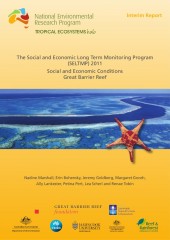
The Social and Economic Long Term Monitoring Programme (SELTMP) for the Great Barrier Reef is the result of a massive regional level initiative funded by the National Environment Programme (NERP), CSIRO Wealth from Oceans, James Cook University and the Great Barrier Reef Foundation. We have worked with strategic and technical advisors across state and federal government as well as with traditional owners, private industry, community, non-government organisations and from within the research fraternity.
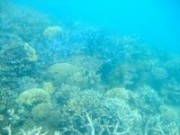
Corals and many other reef invertebrates such as giants clams, gorgonians, sponges and hydroids live in a symbiotic relationship with dinoflagellates, also referred to as "zooxanthellae", that provide them with an important part of their daily energy requirement through photosynthesis. The genotype of dinoflagellates (Symbiodinium) plays an important role in determining the environmental tolerance range of their host. The genus Symbiodinium consists of nine broad genetic groups or clades that are genetically highly distinct (clades A-I).
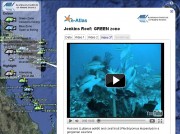
This study investigated the influence of Great Barrier Reef Marine Park Zoning on fish abundance of the Great Barrier Reef. The fish populations of pairs of shoals, one in a Green zone (closed to fishing) and the other in a Blue (open to all fishing) were compared using Baited Remote Underwater Video Stations (BRUVS).
These BRUVS revealed a diverse fauna of fish, sharks, rays and sea snakes, including species prized by fishers, taken as bycatch, or not vulnerable to hook and line fishing.
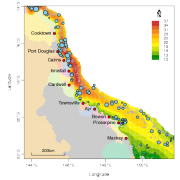
This article outlines the use of two R packages, geoMap and geo, developed to analyse data and generate outputs for the e-atlas and ningaloo-atlas. geoMap generates a variety of plots that can be used for exploratory analysis, presentations and publication-quality maps. geo is an extensive set of spatial modelling techniques that produces fitted surfaces that can be added to publication graphics, or added to the e-atlas as layers, or used as KMLs.
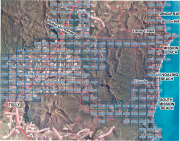
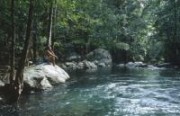
The need to develop a comprehensive understanding of the role that protected areas play in the lives of communities is as important as developing a greater understanding of the scientific aspects of protected areas. The aim here was to monitor the attitudes, perceptions, knowledge and use of the Wet Tropics World Heritage Area (WTWHA) by residents of the Wet Tropics bioregion. The research builds on previous community attitude surveys that have been undertaken for the Wet Tropics Management Authority (WTMA).
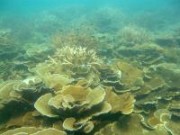
Middle Reef has been exposed to frequent disturbances since surveys began in 1993. Coral cover and coral diversity has been remarkably resilient to high temperatures, freshwater and high sediment loads. Middle Reef is more resilient to bleaching than other reefs around Magnetic Island and the corals are adapted to warm average temperatures. Sediments have high levels of organic carbon and nitrogen. Wave damage from cyclones is a minor threat. However rainfall associated with cyclones or summer low pressure systems can result in exposure to low salinities and long periods of turbidity. Recent outbreaks of atrematous necrosis on Magnetic Island suggest coral disease could be a new risk to Middle Reef. Assessments of the status of Middle Reef in 2010 were postitive (Thompson et al, 2010), based on observed levels of community attributes against estimates of expected change derived from a coral growth model (Thompson and Dolman 2010).

This study forms part of MTSRF Project 2.5i.2c and examines variations in coding regions (genes) of coral DNA and their relative frequency as distributed along a thermal gradient on the Great Barrier Reef. The genes were also investigated for their known or possible roles as an indicator of environmental stress, with particular emphasis on measuring thermal tolerance.
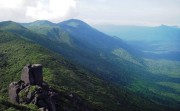
Researchers from the Centre for Tropical Biodiversity and Climate Change at James Cook University (funded by the Marine and Tropical Sciences Research Facility), are working to identify climate refugia that could promote adaptation to climate change in rainforest species of Australia’s Wet Tropics. Major priorities are to identify existing refugia not currently included in the protected area network, along with sites where land degradation could potentially be reversed to strengthen refugia.



